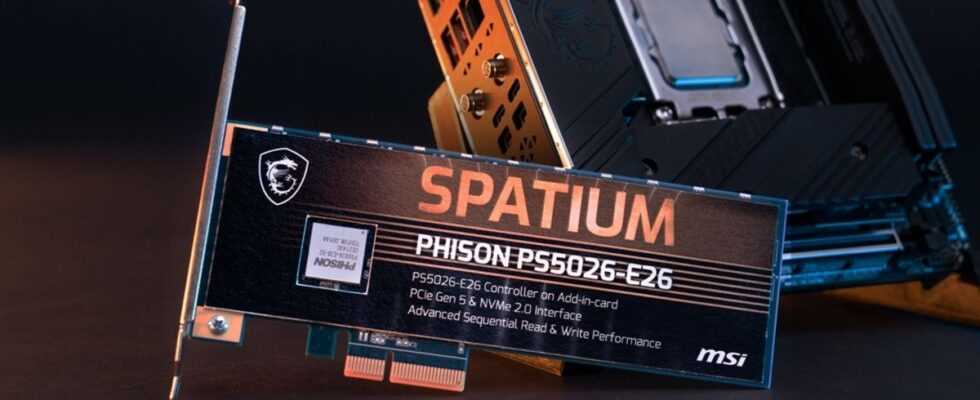2
MSI and Phison have set up a partnership to accelerate the development of SSDs operating on a PCIe 5 interface. This first prototype should allow speeds of more than 10 GB/s.
While SSDs meeting the PCIe 4 standard are becoming widespread in computers and other game consoles (Sony PlayStation 5), the time has come to look at future SSDs operating on a PCIe 5 interface. The major difference between both versions of this standard are at the level of bandwidth, doubled on PCIe 5 compared to the previous generation. The theoretical physical barrier of 8 GB/s for PCIe 4 (x4) SSDs will then increase to 16 GB/s, a big deal.
As often, Phison is one of the first companies to work on the subject. A specialist in memory controllers, it was a pioneer in the PCIe 4 SSD segment by offering its PS5016-E16 chip to SSD manufacturers. Among its first customers, Corsair, whose MP600 was released at the end of 2019.
For PCIe 5, Phison has partnered with MSI to develop a first reference SSD; we talk more about concept than finished product. Responding to the name of Spatium E26, this prototype takes the form of a daughter card (AIC) in PCIe 5 4x format and based on an NVMe 2.0 interface – a first there too. The onboard controller is a Phison PS5026-E26, a 12nm chip engraved by TSMC with two Cortex-R5 cores and three proprietary cores. This chip handles up to eight channels, as well as 3D TLC and QLC NAND memory.
For the moment, we have very little information on the Spatium E26. We just know that the sequential throughput is 10 GB / s, or even more. However, the controller used could reach 12 GB/s in sequential reading and 11 GB/s in writing. This combined with the ability to handle random access up to 1,500 KIOPS read and 2,000 KIOPS write.
The first PCIe 5 SSDs on display by Phison at CES 2022. © Phison
We also notice that no heat sink is used. A simple thermal sticker – a copper foil is integrated into the sticker – is present, which suggests a lower heat release on this generation of products. Finally, a version in the M.2 2280 format – the most common now – was also presented a little earlier by Phison during CES 2022, without anyone knowing more.
The first PCIe 5 SSDs should land in 2022. To take advantage of them, you will have to go through a 12th generation Intel Core platform or wait for the arrival of the standard on the Ryzen 7000s in the second half of the year.

